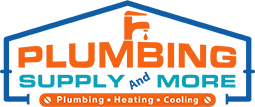Indoor & Outdoor Sensors
Indoor & Outdoor Sensors are essential tools for monitoring and managing environmental conditions in various applications, from HVAC systems and home automation to weather monitoring. These sensors track key parameters such as temperature, humidity, and air quality, providing real-time data that can be used to optimize system performance, control environmental conditions, and make informed decisions. By integrating sensors into your systems, you can enhance comfort, safety, and efficiency both indoors and outdoors.
Understanding Indoor & Outdoor Sensors and Their Applications:
- Temperature Sensors: Temperature sensors measure the ambient temperature of an environment, providing critical data for HVAC systems, climate control, and weather monitoring. They ensure that heating and cooling systems operate efficiently and maintain the desired indoor climate.
- Humidity Sensors: Humidity sensors monitor the moisture levels in the air, which is important for indoor air quality, comfort, and preventing issues like mold growth. These sensors are commonly used in HVAC systems, greenhouses, and weather stations.
- Air Quality Sensors: Air quality sensors detect the presence of pollutants, particulates, and gases such as carbon dioxide or volatile organic compounds (VOCs). They are vital for maintaining healthy indoor environments, especially in homes, offices, and industrial settings.
- Pressure Sensors: Pressure sensors measure the atmospheric or differential pressure in a given environment. They are used in applications such as HVAC systems, weather forecasting, and industrial processes to ensure accurate control and safety.
- Motion and Light Sensors: Motion sensors detect movement, and light sensors measure the intensity of light. These sensors are commonly used in security systems, smart lighting, and energy management systems to optimize safety and efficiency.
- Weather Sensors: Weather sensors, including rain gauges, wind sensors, and UV sensors, are used for outdoor monitoring to provide data on weather conditions. They are crucial for agriculture, environmental monitoring, and outdoor system control.
Choosing the Right Indoor & Outdoor Sensors for Your Needs:
- Determine Your Monitoring Needs: Identify the specific environmental parameters you need to monitor, such as temperature, humidity, or air quality. This will help you select the appropriate sensors for your application.
- Compatibility with Systems: Ensure that the sensors you choose are compatible with your existing systems, such as HVAC controls, home automation platforms, or data loggers. Compatibility is key to seamless integration and effective data utilization.
- Accuracy and Calibration: Consider the accuracy of the sensors and whether they require regular calibration to maintain precision. High-accuracy sensors are important for critical applications where precise data is essential.
- Measurement Range: Select sensors with a measurement range that suits your environment. For example, outdoor sensors may need to withstand extreme temperatures or weather conditions, while indoor sensors may require sensitivity to slight changes.
- Durability and Environmental Resistance: For outdoor sensors, choose models that are weather-resistant and durable, capable of withstanding exposure to elements like rain, wind, and sunlight. Indoor sensors should be protected from dust and humidity for long-term reliability.
Maintenance and Troubleshooting for Indoor & Outdoor Sensors:
- Regular Cleaning: Keep sensors clean and free from dust, debris, and other contaminants that can affect accuracy. Use a soft cloth or appropriate cleaning tools as recommended by the manufacturer.
- Calibration: Regularly calibrate your sensors according to the manufacturer’s guidelines to ensure they provide accurate readings. Calibration is particularly important for sensors used in critical applications where precision is crucial.
- Check for Interference: Ensure that sensors are not placed near sources of interference, such as electromagnetic devices, which could affect their readings. Position sensors in areas where they can accurately measure the intended environmental parameters.
- Inspect Connections: Periodically check sensor connections, cables, and mounting points to ensure they are secure and undamaged. Loose connections or damaged cables can lead to inaccurate readings or sensor failures.
- Troubleshooting Issues: If you encounter problems with sensor readings, consult the manufacturer’s troubleshooting guide. Common issues may include incorrect calibration, environmental interference, or hardware faults. If necessary, seek professional assistance to diagnose and resolve the problem.
Frequently Asked Questions About Indoor & Outdoor Sensors
- What are indoor and outdoor sensors, and how do they help in various applications and systems?
- Indoor and outdoor sensors monitor environmental conditions like temperature, humidity, and air quality. They are vital for applications such as HVAC systems, home automation, and weather monitoring. These sensors provide real-time data that can be used for controlling systems, optimizing performance, and making informed decisions about environmental conditions, enhancing comfort and efficiency in various settings.
- How do I select the right indoor and outdoor sensors for my specific needs, and what factors should I consider, such as compatibility and accuracy?
- Selecting the right sensors involves determining the environmental parameters you need to monitor and ensuring compatibility with your systems. Consider factors like accuracy, measurement range, and calibration requirements. Choose sensors that meet your specific needs and provide reliable data for accurate monitoring and control. Proper selection ensures effective management of your indoor and outdoor environments.
- What maintenance and care are required for indoor and outdoor sensors to ensure accurate and consistent measurements, and how can I troubleshoot sensor issues?
- Regular maintenance for sensors includes cleaning and calibrating them according to the manufacturer’s guidelines. Dust and debris can impact accuracy, so keep sensors clean. If you experience issues with sensor readings, check for loose connections, damaged cables, or interference. Refer to the manufacturer’s troubleshooting tips or seek professional help to resolve problems and maintain accurate measurements.
Explore our comprehensive selection of Indoor & Outdoor Sensors to find the perfect solutions for your monitoring needs. From temperature and humidity sensors to advanced air quality monitors, our range of products ensures accurate and reliable data collection for your home, business, or outdoor environment.













